Enemy Front Review
So how about those WWII shooters, eh? I mean, wow. They sure are something, with their guns, their tanks and their… er, Hitler? Alright, here’s the truth: I’ve never played a WWII shooter. It’s not a deliberate choice, like I have an intense phobia of stick-shaped grenades or being shouted at by men with German accents or anything; it’s just that I was kind of busy downloading sketchy freeware games onto my ancient PC around the time they were in vogue, and in the last few years it’s been all modern military stuff. Judging by what I’ve seen, I didn’t miss much – lots of greyish-brown recently-bombed buildings, linear progression through strategically-placed wreckage, a dash of muddy European countryside and something called an ‘achtung’ – but CI Games seems to have decided that lifting the lid on a coffin that the rest of the gaming world had long since sealed away is the right thing to do here. Alright then, CI, let’s see what you’ve done to make shooting Nazis in a pile of rubble interesting. If you do it right, I might even forget all about Alien Rage.
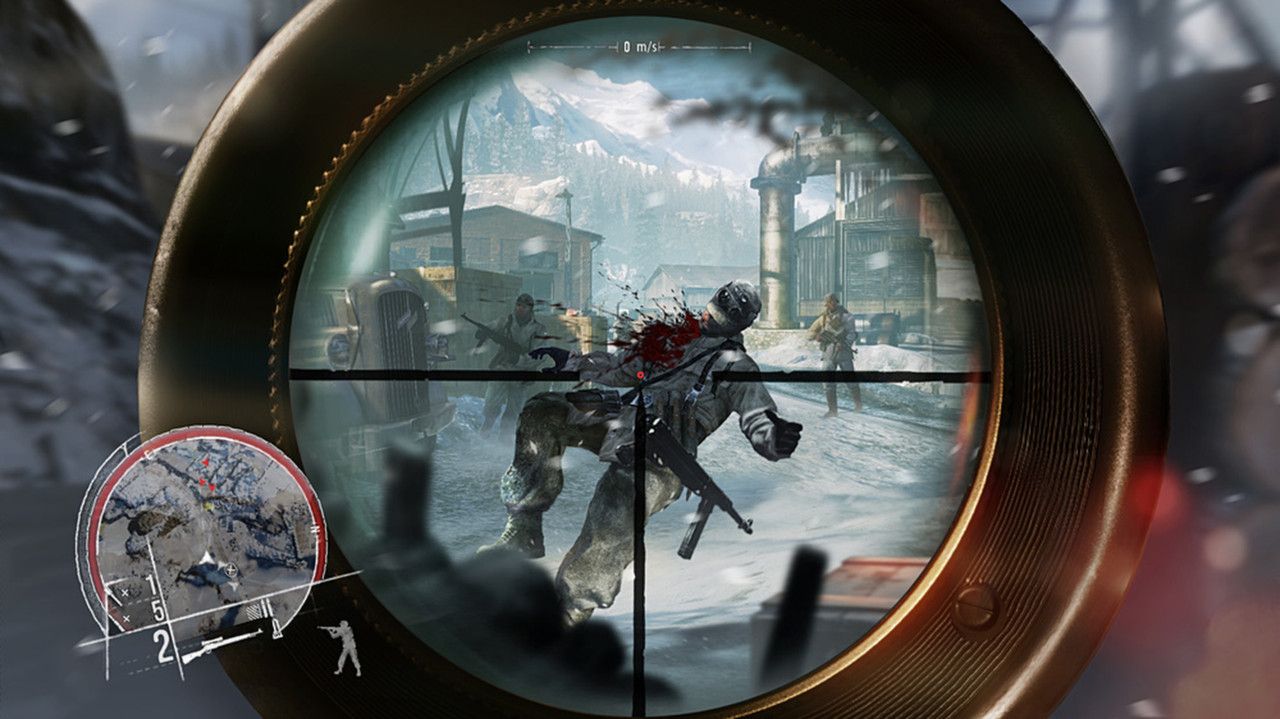
Things start off on a perplexing note when the protagonist is revealed to be none other than… Conrad Hart from the Flashback reboot? Oh, no, silly me. It’s so easy to confuse you action game protagonists, you know. No offense meant, Mister Hawkins, was it? Robert Hawkins, right. Anyway, Robert is an American war correspondent caught up in the midst of the Warsaw Uprising, a Polish resistance movement against the occupying Nazi forces. Haven’t heard of it? That’s probably because it doesn’t have a happy ending: the resistance was flattened without the expected help from the Soviets, both figuratively and probably literally as the Germans turned the city into a mountain of shingle, brickwork and assorted lumps of concrete. You wouldn’t know this from the way the game presents it, though. Considering the doomed nature of the whole operation I had already adopted something of a defeatist attitude, but it gets difficult to maintain that kind of illusion when the Axis forces have such a tendency to run around in the open and Robert is gifted with the combat capabilities of every protagonist in every generic military FPS ever.
You see, given that the story makes a big noise about Robert just being a writer, you’d think at first that this was an attempt at making him seem like a vulnerable everyman, a breakout from the usual hardened soldier that accompanies this kind of game like an unsightly boil on top of another larger boil, but the moment you hit gameplay you’re just another gun floating in the air, gifted with astonishing powers of regeneration, pin-point accuracy – provided the ironsight is rammed up against the camera first, naturally – and the ability to turn completely invisible in three feet of long grass. Presumably Robert will be included in the next Pokemon game. Rather than try to rectify this discrepancy, Enemy Front seems content to just lazily try to distract from it every now and then, with characters occasionally asking Robert where he learned to shoot – no questions on his mutant regeneration and camouflage, though – and him brushing it aside as “oh, I picked it up in Spain,” as one would discuss a holiday souvenir. I see, so he has received the prerequisite years of off-screen special-forces training; they’re just even more contrived than usual.

Whatever, it’s a first-person shooter, right? Nobody ever asked where Gordon Freeman learned to shoot, or which part of his post-graduate degree included a bunnyhopping unit. Only about half of the game actually takes place in Warsaw, with the rest consisting of Robert’s flashbacks of other WWII operations, that he inexplicably became a part of, because obviously he’s the only person who can— sorry, suspension of disbelief, suspension of disbelief. The flashbacks give us a chance to jump between various locales – the French countryside, an island off the coast of Norway, a German V2 rocket facility – keeping things fresh, if not particularly cohesive. I mean, I’m not asking that Enemy Front had showed all the arduous trekking through muddy fields and snowy wastelands that presumably took place, but there isn’t really any logical connection between all these flashbacks besides Robert saying “here’s another thing I did” whenever there’s a break in the fighting. Incidentally, these flashbacks never visit Spain. I guess Robert doesn’t want to recount to his new mates in the resistance about the time he held a Sten gun the wrong way up.
Gameplay, too, has a tendency to flip back and forth erratically, which isn’t necessarily a bad thing in itself. Part of the time is spent in plain old military shooter mode, which in this case is as generic as they come: shoot a guy, shoot another guy, follow a patronizing objective marker through an absurdly linear path, use a turret, dutifully blow up a tank for the tenth time today, gaze empty-minded and pick your nose as an overblown set-piece takes place, die because you couldn’t see the Nazis through the ten thousand particle effects currently occupying the screen. However, often – though not nearly often enough for my tastes – somebody leans on the brakes and the game turns into a stealth-em-up reminiscent of Far Cry, forcing you to use guerrilla tactics and trickery to overcome the brutal might of the Nazi war machine. You know, like what an underground resistance might actually conceivably do. You can mark guards with binoculars, hide in vegetation or in dark areas, throw distracting rocks and, if you catch somebody alone, creep up behind them and go “boo!” Then, while the two of you are laughing it off and exchanging cigarettes for food rations, you stab him. There are even a few nice little touches I haven’t seen much before here and there, like being able to remove the chocks from parked vehicles and send them careening off to cause merry chaos, or being able to fire weapons without a silencer and remain undetected as long you coincide your gunshots with loud noises. It’s not really forced stealth, since I’m fairly sure that you could go in all guns blazing and still emerge victorious without needing so much as a band-aid, but there is something quite satisfying about successfully doing it sneaky-beaky like.
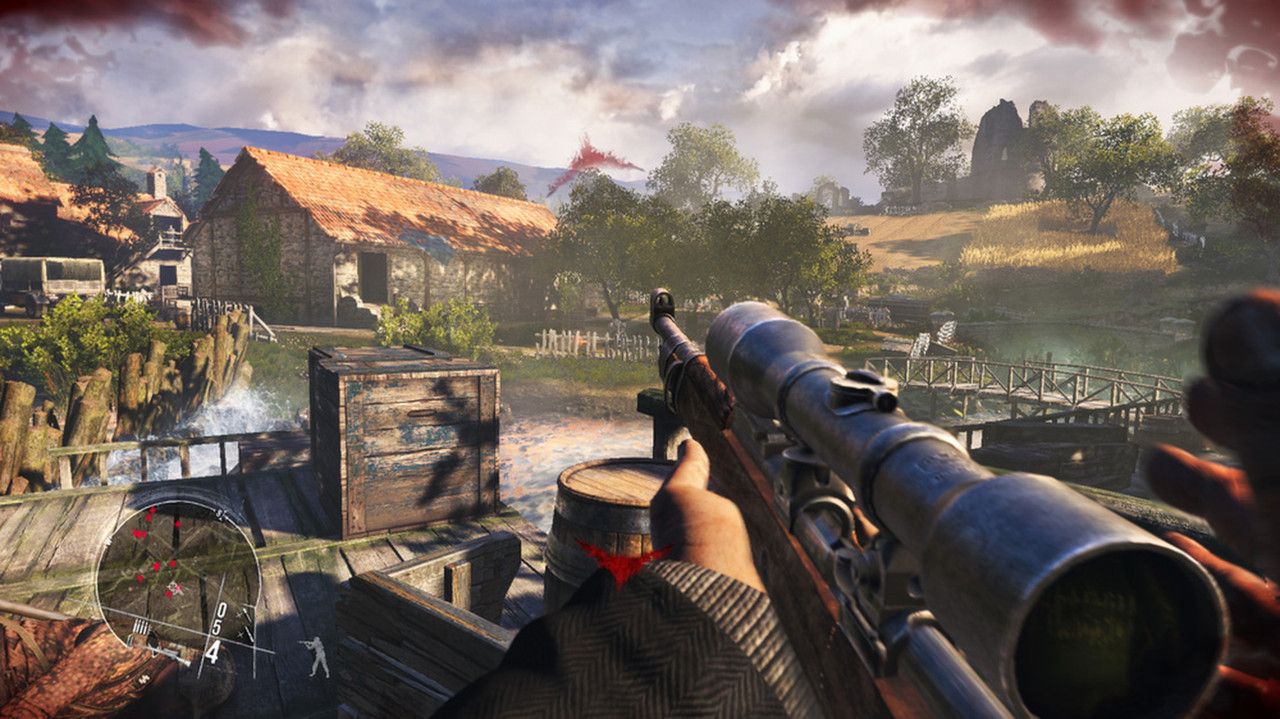
By the way, that interpretation I gave of the game’s stealth kills was probably closer to the truth than you might have thought. I would have assumed that anybody trying to remain undetected while in the midst of heavily armed opponents would endeavor to be as quick and quiet as possible when trying to take one out, but whatever happened in Spain, it evidently didn’t teach Robert this. Not only is he strangely lax about covering his target’s mouth – meaning that your ‘stealthy’ progression through the level is typically marked by the sounds of gargling Nazi screams – but he doesn’t have much faith in his ability to cut through a jugular, since the animation that the game plays more often than not involves frantically stabbing away for several agonizingly long seconds until your unlucky target keels over. Thankfully anybody in the immediate vicinity appears to attribute sudden panicked noises to a comrade falling off a balcony or having their toes run over by a half-track. The same cannot be said of the uncomfortably long kill animations, though, which served me up a fresh steaming ‘game over’ screen on multiple occasions after Robert decided to remain in the open, performing interpretive dance with his pen-knife while every sniper in the area trained their crosshairs on his nads. The worst part of it is that the regular melee attack, which is bound to the same button, doesn’t make any noise and doesn’t lock you into a stupid canned animation, is also a 1-hit kill. Seriously Robert, stop playing with that knife and just club that stormtrooper with your rifle butt.
I can’t say I’m all that keen on the level design, either. It’s hardly surprising that all the generic explosion-packed action sections are set in over-decorated corridors, that’s par for the course, but even when the stealthy bits begin and it’s time for the environment to expand, it doesn’t seem to loosen more than one or two notches on its belt. You do get multiple paths, thankfully, but they provide that very particular system of choice where there’s only one right answer: once you’ve eliminated all the options that are being watched by snipers, require you to dash across open ground, or contain two Nazis resolutely staring over one another’s shoulders in one of the most infuriating examples of self-preservation ever developed, there’s really only a single viable route left. This fact, as well as your possession of a map, a minimap, and explicit directions on where to go, is apparently lost on the HUD, which insists on keeping the objective marker around like a smelly friend you don’t really want to talk to any more. Not that there would be any reason to stray off the beaten path anyway: health regenerates and ammo is common – absurdly common, almost as if there’s a war going on or something – so you won’t gain any gameplay advantages from it, and the only other things you could possibly find are completely arbitrary collectibles, without so much as a newspaper clipping or handwritten note to liven things up. “Oh wow, I’ve gained such an uplifting sense of achievement from locating four out of four shiny bobbins in this level.” Do you want to know why I didn’t attribute that quote to somebody? Because nobody in the history of humanity has actually said it. Ever.
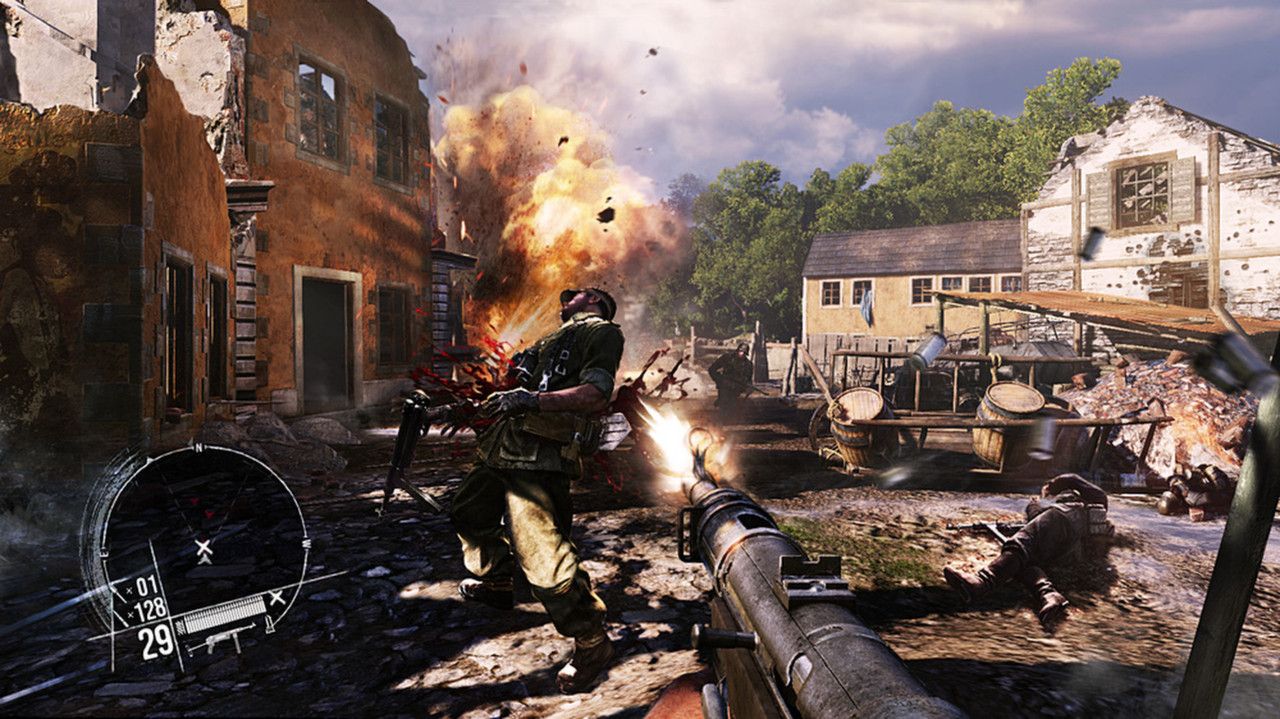
No matter how good the stealth is, sooner or later Enemy Front degrades – or simply flips over – to its action, and while this part is mechanically competent, it’s severely lacking in imagination. You shoot the Nazis, they shoot back, you win because you can tank bullets and your targets move between cover like a retiree fetching the newspaper from the mailbox in the morning. The game tries desperately to keep things varied with the odd turret section or sniper battle, but it doesn’t work because we’ve all seen it done a thousand times over the last six or seven years. What exactly is the appeal in shooting a tank with a Panzerfaust, anyway? You hold right-click, take aim at a massive unmoving target that seems strangely disinterested in dispatching you, and then left-click. Unless you’re the kind of person that happily gurgles “boom!” and claps their hands together every time something explodes on-screen, that doesn’t sound particularly satisfying. And yes, Enemy Front, it was kind of cool the first time I broke down a door in slow motion and shot everybody in the room, but it was old-hat before you jumped on the idea, and your repetitive use of it has only forced it to grow more stale than ever before. The game even does that Sniper Elite thing where you watch your rifle bullet sail through the air and tunnel through your target, only without the creepy psychotic gore-o-vision, and therefore significantly less interesting. Maybe I’ve just been spoiled by months of covering indie games clamouring to show off their new ideas – with varying degrees of success – but Enemy Front’s gameplay just doesn’t seem to have a single original idea in its head.
And really, what’s a game like this even doing with a multiplayer mode? Oh yes, the moment I get home I just can’t wait to get some mates together and play our favourite game, Enemy Front! Nobody could have possibly looked at this game and honestly thought it was going to take the world by storm, so why implement a feature that relies so heavily on lots of people owning it? This is as token as it gets; a checkbox ticked on some deluded manager’s paperwork. Even if you are the kind of person who likes this style of gameplay, why would you play this when Call of Duty does everything it does with about a hundred times the style? There are three multiplayer modes and four maps – slow down guys, don’t overload us with content or anything – with the modes consisting of Deathmatch, Team Deathmatch, and something called Radio Transmission, which is essentially a reskinned ‘capture the points’ mode with a few extra rules thrown in. As for how it actually functions, I can’t say for certain. Word evidently gets around fast, since nobody seemed to actually be playing.
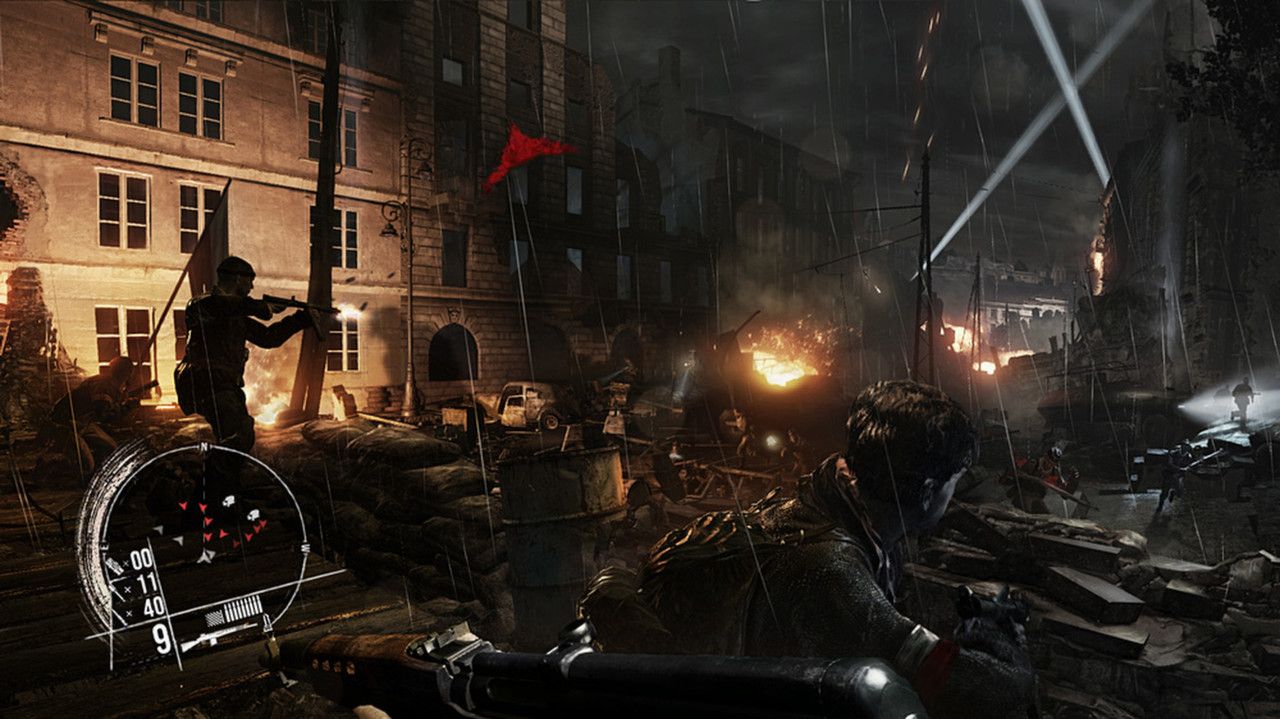
So let’s return to the bit that actually does have some potential: the story. Just as a word of warning, I’m going to write a bit about the ending here, so if this review has hyped you up for this game so effectively that you can’t bear to have it spoiled for you – this is the point where I wish I did video reviews, just so I could drape that sentence in a thick sheet of sarcasm – then I suggest that you skip to the next paragraph. After things going just rosy for the entire game, just before the final mission it turns out that this isn’t actually alternate-history fiction, and that the Nazis really are going to bulldoze the resistance after all. Wait, what? We just won every single conflict with them that I’ve been in, and now you’re telling me that we’re all going to die? Fine, let’s get on with the thrilling, futile climax. What will it be? A desperate last-stand in the ruins of a town square? One final ill-fated battle that really drives home the horrific inevitability of being slowly crushed by the iron boot of a monstrous war machine? Erm, no. What actually happens is that you fight your way through two or three buildings, get on a rowing boat with your Polish friend, and escape. I’m not questioning the legitimacy of the tactic, but as far as anti-climactic endings go it’s right up there with just having the credits roll halfway down a corridor. No big battle, just a scripted sequence and one last Panzerfaust kill for good measure.
And now we get to my favourite part. You see, my most memorable moments in Enemy Front were not spent in the set-pieces, nor in the cutscenes, nor even in the times when the gameplay got halfway exciting. The parts I remember most vividly were the bugs. Sure, the multiple loading screen crashes were probably the most severe, but they didn’t rattle me half as much as the cutscenes where the video simply failed to load, causing me at one point to stare at a black screen with unaccompanied audio for nearly a minute before wising up to the issue. Neither were quite as treacherous as the level geometry, though, which I somehow managed to get repeatedly stuck in. But I was not the only actor in this tragedy to fall prey to this bug, oh no! At one point, after surviving a battle that seemed unusually difficult, I scouted around and found a truck full of resistance members – ostensibly my backup – wedged awkwardly under a bridge in a manner I normally associate with badly-made Garry’s Mod contraptions, an image that was swiftly completed when I brushed up against it and was instantly killed. And you can’t just climb onto a ledge any more in video games, can you? It has to be a button prompt and a pre-animated sequence, both located at a very specific point on the wall, and if somebody misplaces a line of code somewhere then I guess half the time you just can’t climb onto that ledge, sonny. See, this wouldn’t have happened if you’d just implemented crouch-jumping, would it?
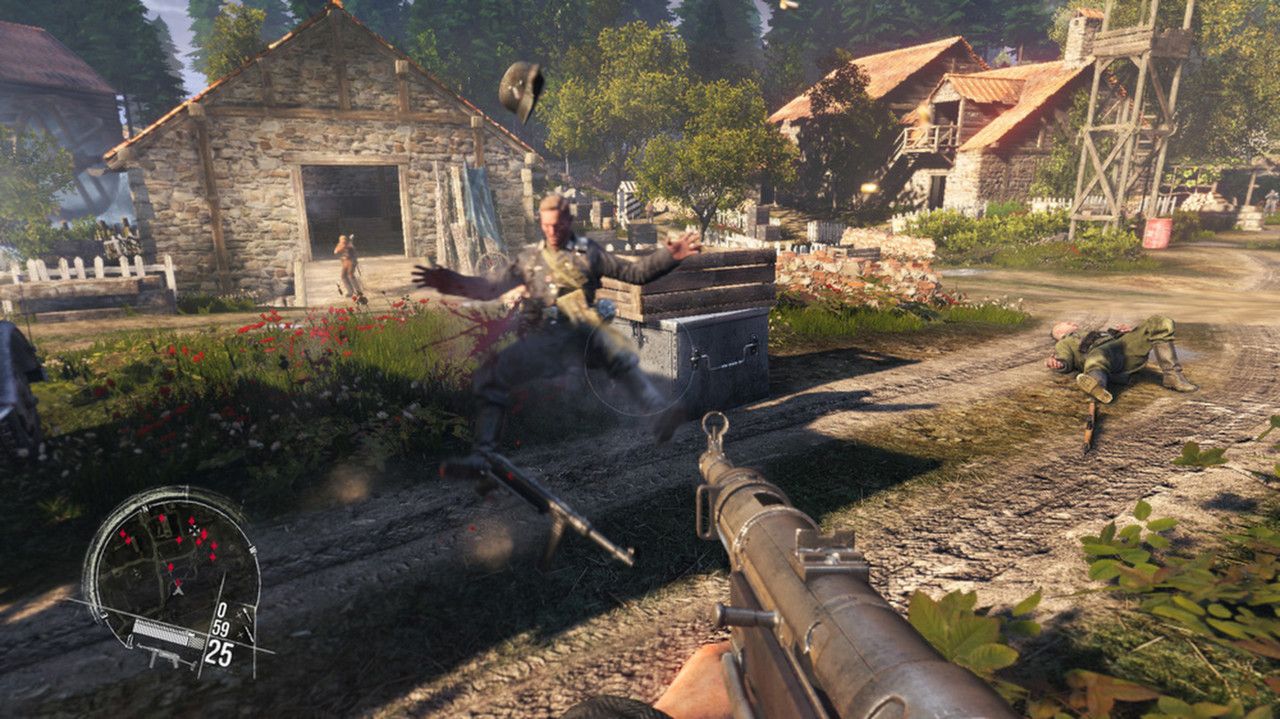
Overall Enemy Front just strikes me as a very unambitious game. Everything it does is technically competent – except all the bugs, but whatever – but I can’t recall a single time when it did something and I thought “oh, that’s cool.” Whenever I finish a game, I’m usually left with a sense that it has, in some small way, advanced gaming as a whole, either by successfully pulling off at least one new idea or being so blisteringly awful that everybody knows not to do the same thing again. Enemy Front is one of the few games that hasn’t done either of those. By these standards, it’s a truly worthless game, but judging it under those conditions is hardly fair. It works. It’s not clever, deep, original, or particularly well-polished, but it will transport you six or seven hours into the future without planting you into the dirt. Perhaps a game that sets out with a modest goal – and I mean really modest – but more or less achieves it should be applauded in the face of the empty promises that every big release makes, or – no, I think I prefer ridiculous ideas. Let’s go back to cross-country love stories and quirky roguelikes next time around, alright?
